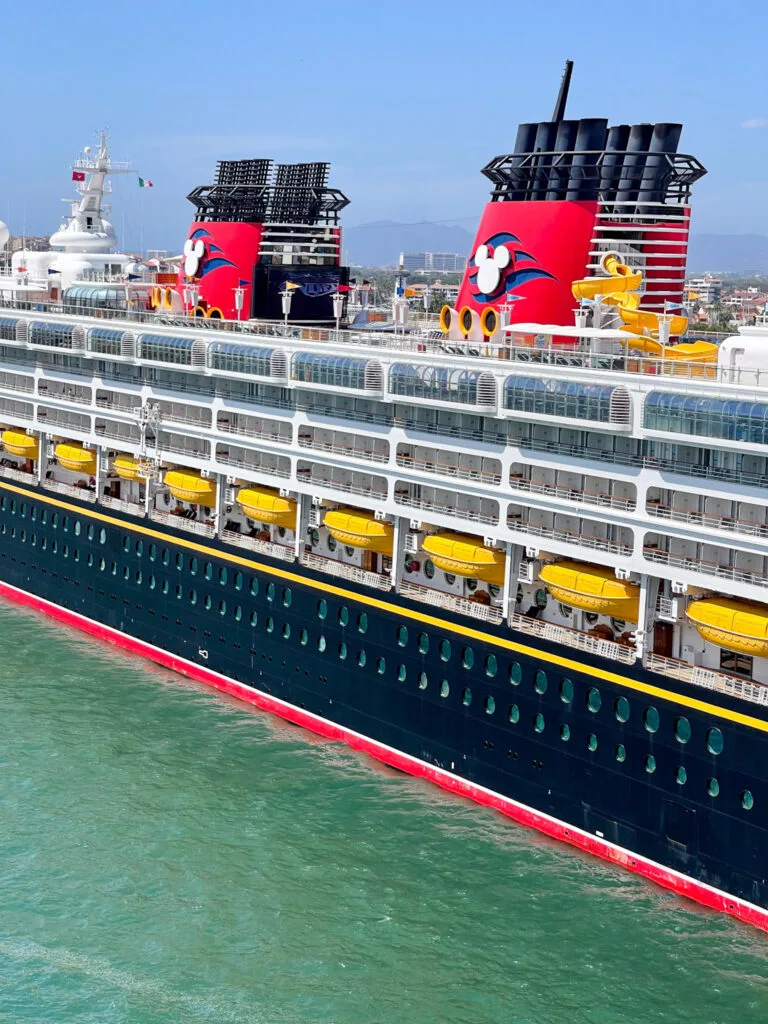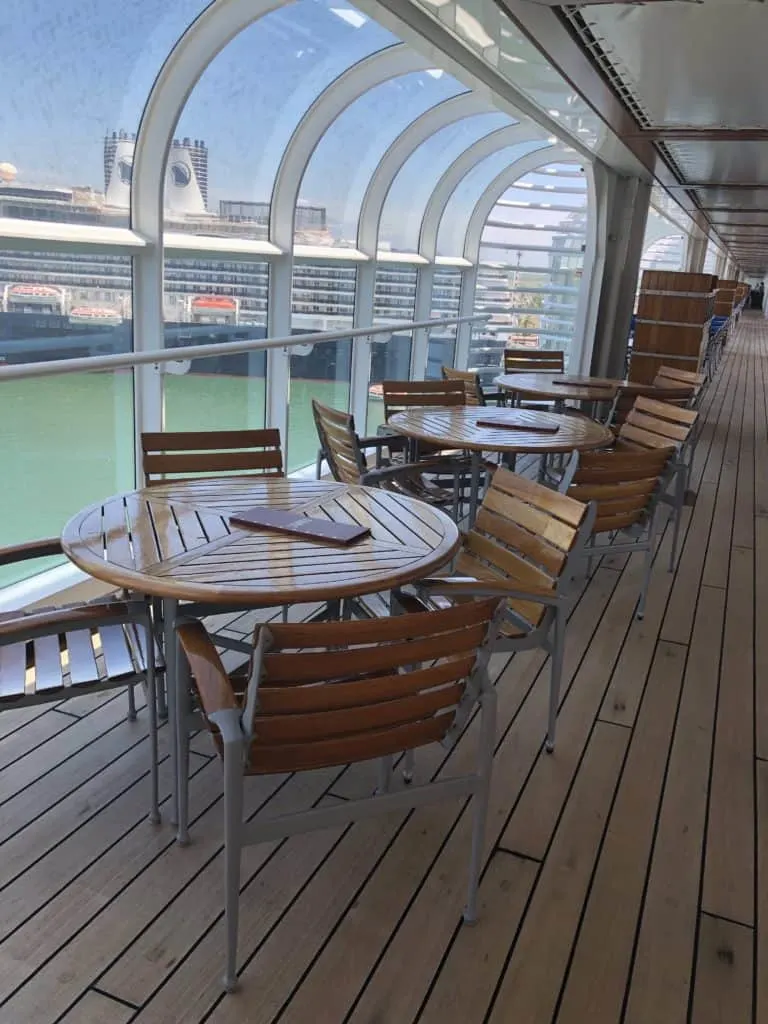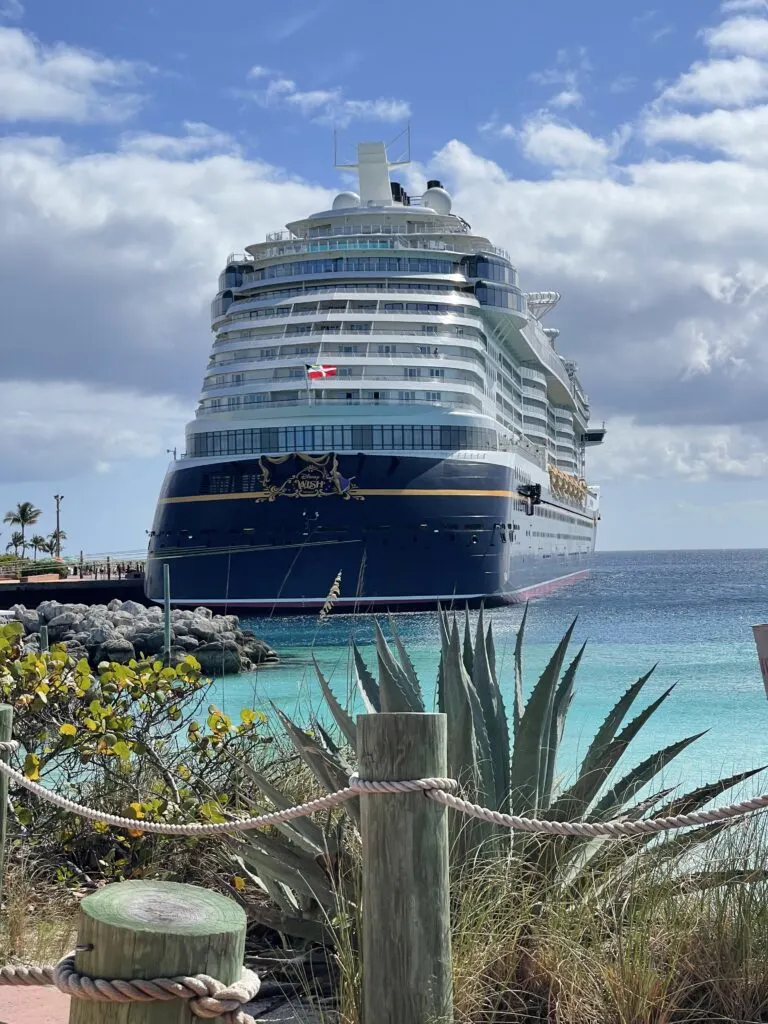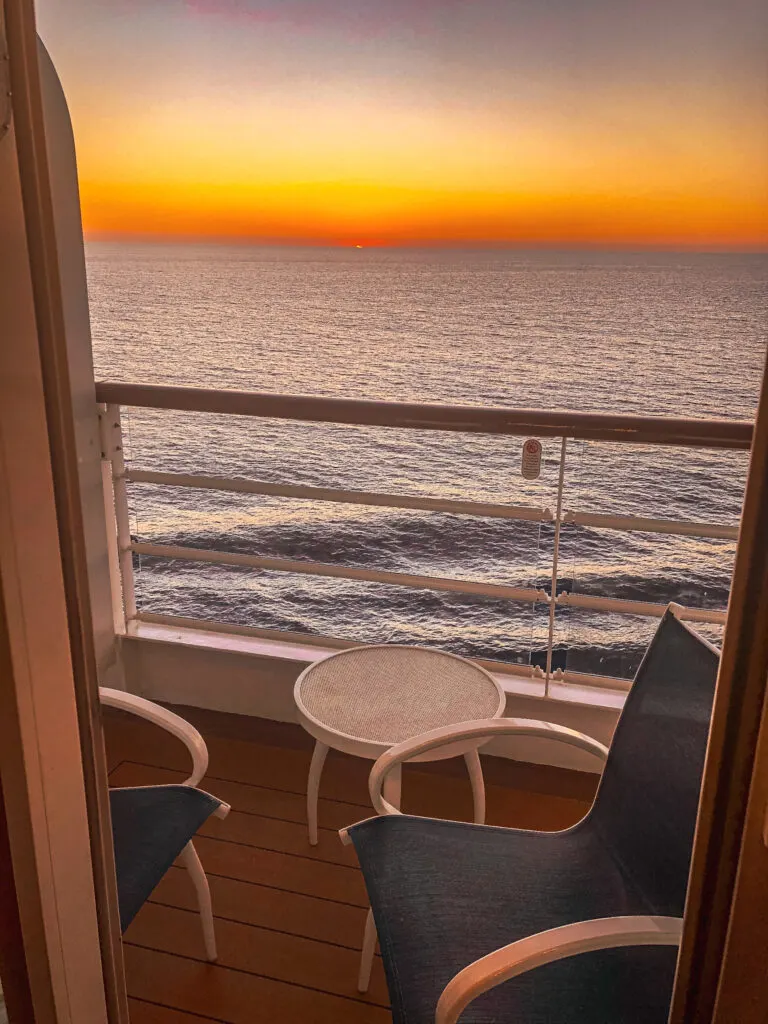Do you get seasick on a cruise? This is a big concern for many people and can even prevent some from choosing to sail on a cruise.
Whilst some people definitely do experience seasickness, for most people it is not an issue.
The modern cruise ships of today are much more stable than they were even a decade ago. Technology has moved on a lot to help prevent seasickness.

However, motion sickness, or its ocean based equivalent, sea sickness. is still a very real concern for many people. If you are unfortunate enough to experience it you will definitely want to take steps to avoid it.
Here are some tried and tested remedies to help you avoid seasickness, including practical steps, natural remedies and motion sickness medication.
We have ads on our blog to provide this as a helpful resource for you We also use affiliate links; if you click on a link and purchase an item we may receive a small commission.
SEASICKNESS 101
How Does it Feel?
There are a number of symptoms and you may experience these in an combination.
Broadly the symptoms of seasickness are nausea and vomiting, headache, dizziness, cold sweats, yawning and loss of appetite.

If you have it, there is usually not mistaking the symptoms!
Related: How to Pack the Best Cruise First Aid Kit
Why Does it Happen?
The simplest explanation is that motion sickness is caused by an in balance in the inner ear. When you experience motion on a ship your brain is getting different signals from your eyes, your muscles and you inner ear (which deals with balance).
With all of these conflicting signals coming to the brain it gets confused and starts to defend itself by producing motion sickness symptoms.
Will it Affect Me?
No one really knows why some people are more likely to get motion sickness than others.
There is some evidence that there is a genetic element to deciding who is more prone to seasickness. It is generally accepeted that children under 12 and pregnant woman are also more likely to experience symptoms.
Also, women are more likely to get seasickness than men.
Interestingly it is very rare for children under 2 to suffer. And there is some evidence that your likelihood of getting seasickness reduces with age.
WHAT IS THE BEST WAY TO PREVENT SEASICKNESS?
Prevention is better than cure.
Once seasickness starts it is more of a challenge to stop it.
Here are some ways that you can minimise your chances of experiencing seasickness.
Choose Your Ship Wisely
Some ships are more stable than others.
As a general rule, the more modern and the larger the cruise ship is, the less movement you will feel on board.
If you are comparing ships in the Disney Cruise Line fleet, Disney Wish is currently the largest and the newest of all the ships.

Having sailed on all of the Disney ships I can say that they are all pretty stable, but you do feel less movement on Disney Wish than you do on one of the smaller ships, Disney Wonder.
Pick the Right Stateroom
This really can make a big difference.
You feel the movement of the ship very differently depending upon where you are on the ship.
Mid ship and lower decks are the best bet if you are prone to seasickness. You may get amazing wake views from that aft cabin, but you may regret your choice if you start to feel sick.

I first realized just how much of a difference the position of a cabin can make when I was sailing many years ago with my parents. They had an aft cabin and I was about 20 cabins down the hall.
Sailing around the Bay of Biscay, notoriously rough seas, it was very clear just how much more movement there was in the aft cabin than in one not even that far away towards midships.
You may also want to avoid an inside cabin.
Being able to see the horizon can help to avoid seasickness. So pick an Outside Cabin with a window, or if your budget allows, book a Verandah. Having your own balcony can also help as you will also be able to easily get into the fresh air.
Be Aware of Where You are Sailing
You need to choose your sailing carefully.
Some seas are notoriously rougher than others.
If you are sailing on an Alaskan Cruise, pick an Inside Passage itinerary rather than one which sails through the Gulf of Alaska. These are usually the one way Alaskan cruises rather than the usual roun trips from Vancouver and Seattle.
Transatlantic cruises can also be more prone to rough seas, so perhaps don’t pick this as your first cruise.
Also the Pacific Ocean can be particularly challenging to sail smoothly through.
Although you will only find a limited number of cruise ships to do this route the Drake Passage between South America and Antarctica is most likely going to give you a rocky voyage.
Sailing during hurricane season also means that rough seas are more likely. Sailing during hurricane season is very safe, due to the technology and skill that cruise ship crews now have.
But if you are sailing away from a hurricane, and I speak from personal experience (!) the seas can certainly be pretty rough.
Related: Should I Sail During Hurricane Season?
BEST MEDICINE FOR SEASICKNESS ON A CRUISE
There are many over the counter remedies for seasickness.

The major brands are Bonnie and Dramamine.
For anyone going on a cruise it is probably wise to pack these Dramamine Seasickness Tablets. You can get some that are suitable for children too.
These Chewable tablets are highly rated and suitable for those aged 12 and up.
If you have kids, these medicated lollipops are certainly a way to get them to take the medicine without fuss!
Motion Patches
A lot of people have a great deal of success with motion patches in preventing seasickness.
These Motion Sickness Patches are effective, inexpensive and unobtrusive. You should put them on about an hour before you get onboard.
They can then last up to 72 hours.
With all medications, whether it be over the counter or prescription, they do have potential side effects. Always read the labels and talk to your health care provider.
NATURAL REMEDIES
There are many ways that you can help avoid seasickness that do not involve taking medication.
Eat This Not That
There are certain things to avoid eating and drinking to reduce your risk of experiencing motion sickness.
Dehydration is a big risk factor for many things, including sea sickness, so make sure you are getting enough water.
And I know it may be tempting, particularly with the unlimited drinks packages, but avoid alcohol if you want to minimise your risk.
Avoid fatty, unhealthy foods. Yes this really is possible, even at a cruise buffet!
Green apples can be effective at reducing nausea and these are usually readily available on board.
Ginger can help too. It is a good idea to take some Ginger Chews. These are great for settling an upset stomach. They are inexpensive and very easy to pack for a cruise.
This anti-nausea ginger gum is another great option if you want to avoid medication.
Wristbands for Motion Sickness
Wristbands for motion sickness are such a simple, natural and inexpensive but very effective solution.
These Sea-Band Adult Wristbands are highly rated and work well for many people.
What do you use as an effective seasickness remedy?

Alison Meacham is the founder of EverythingMouse Disney Blog. For over 15 years she has shared her love of Disney Parks, Disney Cruises and Universal Orlando. In over 30 years of Disney Travel she has spent countless months in Disney Parks and has sailed on over 45 cruises. A British native and now a United States resident she splits her time between California, Florida and the UK. And spends a serious amount of time sailing the seven seas. She helps over 200,000 people per month follow their Disney travel dreams.

